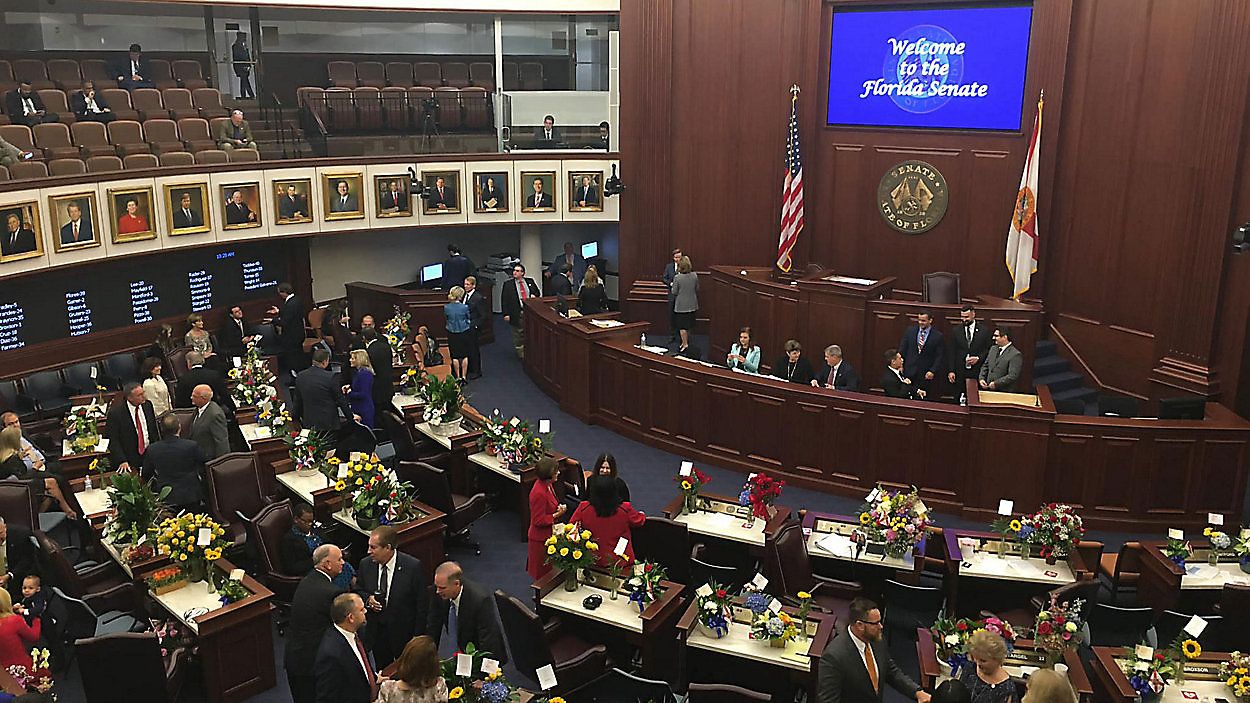While Florida’s investor-owned utilities have expanded their solar generation in recent years to the extent that the state now ranks as the leader in solar capacity in the Southeastern U.S., it still lags when it comes to offering residents and businesses the ability to put solar on their roofs, a new report released Thursday says.
What You Need To Know
- The report takes aim at Florida's owner-invested utilities for not doing enough to encourage rooftop solar for homeowners and businesses
- Florida has surpassed North Carolina in terms of generating the most solar power in the Southeast
- The Florida Public Service Commission says around 90,000 households or businesses have net metering to get rooftop solar power
The report, titled “Blocking Rooftop Solar,” written by Environment Florida, U.S. PIRG and the Frontier Group, contends that the utilities, lobbyists and “front groups” are responsible for undermining local clean energy efforts in the Sunshine State.
“Florida does not allow solar Power Purchase Agreements, or PPAs, which facilitate solar power financing, and we also require that homeowners purchase expensive insurance for solar power systems,” said Ryann Lynn, climate and clean energy advocate for Environment Florida on a Zoom call with reporters on Thursday. She added that while Florida does offer net metering, “the overall policy framework is not conducive to rooftop solar.”
Of the more than 21 million people who now live in Florida, the Public Service Commission reports that around 90,00 households and businesses have net metering, which is the policy that allows residential and commercial customers who generate their own electricity from solar power to sell the electricity they aren’t using back into the energy grid.
“One of the biggest blockages we have when it comes to rooftop solar, is the inherent design of the utility solar system,” says Clifford Mitchum, an independent energy advisor for Crew SWFL Solar. “By focusing on centralized solar installations, they’re not encouraging rooftop solar, which actually assists the utility grid by lowering the overall necessity, because the homeowner’s rooftop solar is providing the power for their home.”
The report also says that another factor on why Florida lags behind many other states when it comes to rooftop solar is the “fierce opposition” from the state’s three investor-owned utilities: Duke Energy, TECO and Florida Power & Light.
Orlando Democratic state Rep. Anna Eskamani acknowledges that the investor-owned utilities have been expanding their solar capacity in recent years, but adds that “they want you to pay them for it.”
“They look at rooftop solar as being competition and so they want to maintain their business model where customers pay them for electricity,” she says. “They don’t want the decentralization of it.”
Spectrum Bay News 9 reached out to all three investor-owned utilities named in the report: Duke Energy Florida, Tampa Electric Company and Florida Power & Light for comment.
From Duke spokesperson Ana Gibbs:
"Duke Energy Florida was disappointed with the “Blocking Rooftop Solar” report. Here are the facts. Duke Energy Florida leads the state in the amount of customer-owned renewable interconnections, which in total currently includes about 850* megawatts (MW) of customer-owned solar generators. Duke Energy Florida currently has about 375 megawatts (MW) and about 45,000 customers with solar generation at their home or business that are relying on the power grid and using the state’s net metering policy. Florida added over 300 MW in solar generator net metering interconnections last year, even during a pandemic. Florida is one of the leaders adding this much customer-owned renewable generation in the United States and Duke Energy Florida is proud to be a large contributor. It’s also important to mention that Duke Energy Florida did not support rolling back net metering during the Florida Public Service Commission workshop. Simply put, Duke Energy is a strong supporter of solar and is committed to providing reliable, dependable, and cost-efficient clean energy to our customers.
*As a size reference – this total is larger than most of DEF’s individual nameplate steam and combined cycle power plants."
From Tampa Electric spokesperson Cherie Jacobs:
"Tampa Electric has nearly 10,000 customers with solar panels on their homes or businesses – and we “interconnect” about 200 more each month (the vast majority of those are residential customers).
We have a strong commitment to renewable energy, and we believe solar energy holds great promise, which is why it plays such an important part of our energy future."
From Florida Power & Light spokesperson Alyssa Ten Eyck:
"Florida is in the midst of one of the largest solar expansions in the U.S. due to the declining cost and increased efficiency of solar technologies. Solar has become a very competitive generation option in Florida – and there are now multiple ways for customers to benefit.
At FPL, we love solar in all forms. Our goal is to significantly expand access to solar for all customers as cost-effectively as possible. For us, that means continuing to execute on our “30-by-30” plan to install more than 30 million solar panels by 2030. We have already surpassed 40% of the way to that plan, with more than 12 million solar panels installed and more than 40 universal solar energy centers in operation, which benefits all FPL customers by reducing the company’s already-low fuel costs and adding more emissions-free solar generation to FPL’s energy mix. It also means offering SolarTogether – the largest community solar program in the U.S. – which enables customers to enjoy the benefits of solar no matter where they live and whether they rent or own, as well as SunAssist, which provides low-income customers with an easy and affordable way to lower their monthly energy bills by sharing in the benefits of Florida-generated solar energy.
Regarding private, rooftop solar, we support it and we continue to support the customers who choose it and can afford it."









